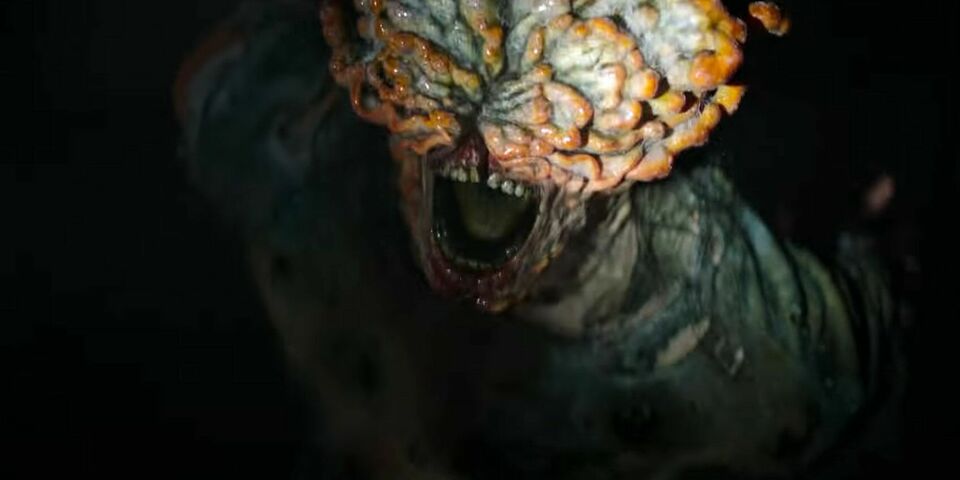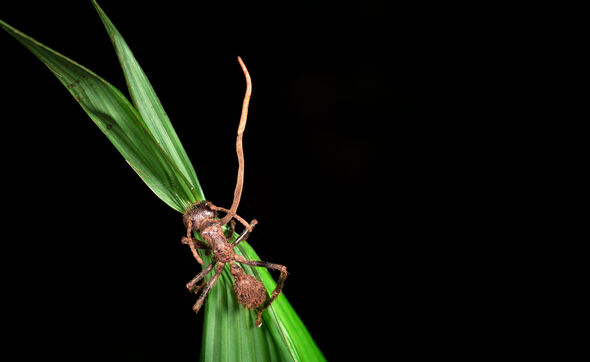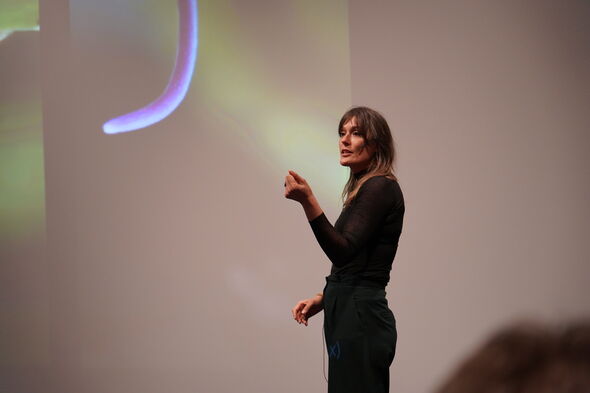“The Last of Us just threw together all the cool things about fungi”
In the game and TV show The Last of Us, people are transformed into bloodthirsty, will-less and zombie-like 'infected' by the parasitic fungus (Ophio)cordyceps. The script is pure fiction, but the concept of a fungus manipulating the behavior of other living creatures is anything but. The Game Dev student team invited Utrecht biologist Charissa de Bekker to De Zwarte Doos last Friday, in order to get an idea of how realistic The Last of Us is and to find out more about the biology behind the infected. During her lunch lecture, she introduced the packed movie theater to the world of the zombie ant.
The portrayal of Cordyceps (actual name: Ophiocordyceps) in The Last of Us is far from rosy. Still, De Bekker is happy that the game and HBO series has put fungi in the spotlight. “It serves as a gateway to talk about biology and evolution with people who are usually not very engaged in the subject”, says the Utrecht University assistant professor before her lecture. For example, today she will speak before an audience that has most likely become interested in the topic after playing the immensely popular game - given that the organizer is Game Dev.
Therefore, the evolutionary background of Ophiocordyceps, a parasitic fungus that mind controls 'zombie ants', is brought up the moment De Bekker gets started. She explains how evolution contributed to the emergence of this phenomenon and how it took millions of years for the fungi to be able to manipulate the behavior of their host. In doing so, she also answers the question that is probably sneaking around in many people’s minds: could this also happen to humans? De Bekker’s answer is a resounding “no”.
Zombie ants
When an ant becomes infected with the parasitic fungus Ophiocordyceps, there is initially little sign of the infection. However, the creature’s behavior gradually begins to change: the ant becomes hyperactive and no longer communicates well with its own species. Under the control of the fungus, it then crawls up on a branch or plant, in order to bite into a spot with a very specific amount of light. Then, a mushroom grows out of the ant’s body which starts spreading infectious spores at the exact time of day when ants become active
So although The Last of Us is based on something that actually occurs in nature, it does take a lot of liberties with science, according to the researcher. “You can see that the creators just threw together all the cool things about different fungi. For example, in the TV show, all the infected are connected to each other via the ground. We do have the mycorrhiza (a symbiotic association between fungi and plants through the root system, ed.) in which fungi form entire networks. However, the Ophiocordyceps only reside in one host and are therefore not connected to other fungi at all.”
And there are more inconsistencies with reality. For example, the infected are already infectious themselves when they are still alive; the ants are only infectious once they die and the mushroom starts spreading spores. De Bekker wants to add that: “the game is more realistic than the TV show in that respect, because in the game, spores do play an important role in the infection, whereas the TV show doesn’t include spores at all.” Another notable divergence is the extent to which the brain is affected by the fungus. In The Last of Us, infected are completely unrecognizable at the “clicker” stage: the head has been replaced by mushroom-like formations and the brain is damaged by the fungus. In reality, the brains of infected ants remain entirely intact, De Bekker explains during her lecture as she shows the audience brain scans on the screen behind her. She adds that the behavioral changes are likely caused by bioactive compounds acting on the ant’s central nervous system.
No cure
Back to humans: what if, purely hypothetically speaking, humans could be infected by a brainwashing parasitic fungus after all? Would the claims made in the TV show be correct? In the first episode, a fictional scientist says there are no preventatives or cures for such an infection and that it is impossible to make them. “There are certainly things we could do about it”, says De Bekker. For example, she and her research group discovered “hyper parasites” which can, in turn, infect Ophiocordyceps. The discovery could potentially lead to new antifungals that have not yet been discovered, she suggests in her lecture.
Continue reading underneath the photo.
Nevertheless, recent news shows that there are not always good remedies available for sometimes dangerous infections. “For example, it’s true that some fungi are not that impressed with the antifungals we currently use in clinical settings. The candida auris, which can be potentially lethal to humans, is one of them.” According to the researcher, relatively little is currently known about fungal infections in animals - and by extension, antifungal agents to fight those infections - because so far, humans have encountered few problems in that area.
Global warming
However, it is likely that humans will be more affected by fungal infections in the future because of global warming, De Bekker predicts. That was something the fictional scientist in the TV show was right about. If fungi have to adapt to higher temperatures, they may also thrive better in human body temperatures. Perhaps this plays into why there is increasing attention for fungal infections, the researcher thinks. “I hope research on antifungals will get a boost now. The more people working on it, the greater the variety of ideas and solutions. So it’s actually a good thing that The Last of Us is making fungi more popular.”
Well-informed audience (spoiler alert)
It becomes clear from the questions asked by people in the audience that some of those present have delved quite deeply into the subject matter. For instance, one person asks what De Bekker thinks of the theory that Ellie (the main character of the story, who is immune to the fungus) might have been infected by the Tolypocladium inflatum (from the same realm of fungi as Cordyceps). That fungus is used to make the immunosuppressive drug cyclosporine, which also targets fungi. As such, it would block out the “zombie fungus”. De Bekker seems pleasantly surprised by the question and agrees that that theory makes sense.
Someone else also refers to Ellie’s immunity and asks if the explanation given in the show, that her mother was bitten before she was born, is plausible. According to De Bekker, it is consistent with what is known about the way the immune system works.
Yet another person asks about the different parasites that infect the different types of ants and wants to know if they exhibit exactly the same symptoms. That turns out not to be the case. Different species of ants prefer specific plants or branches to climb into just before they die, De Bekker says. And some species are better at recognizing infection in their conspecifics than others. Here, the researcher unknowingly touches on a believable aspect of The Last of Us. She explains that as soon as the ants learn that a conspecific is infected, they attack it. The same is true in the show: any infected person is to be immediately executed.




Discussion